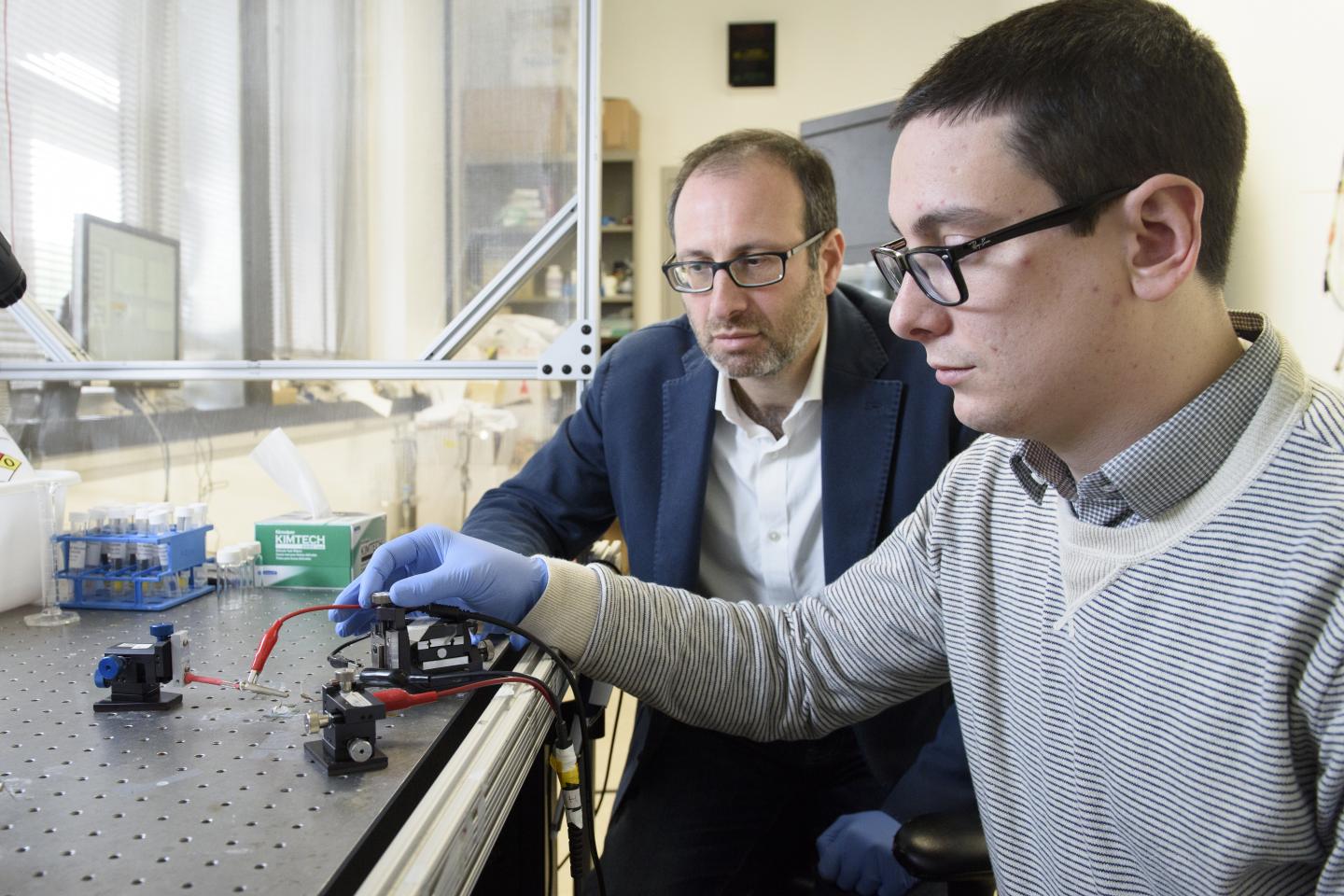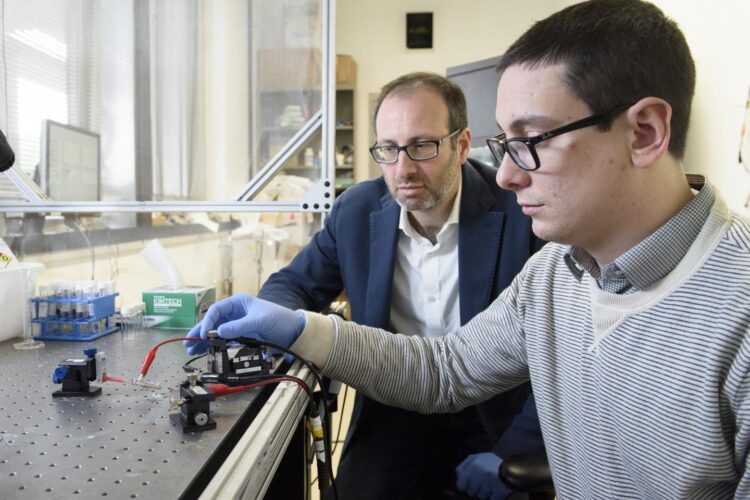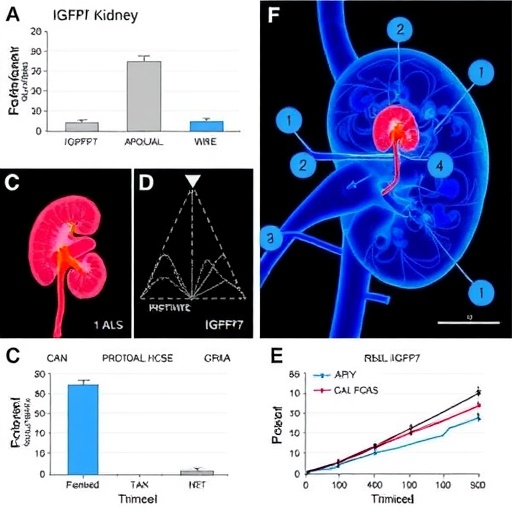
Credit: L.A. Cicero/Stanford News Service
In 2017, Stanford University researchers presented a new device that mimics the brain’s efficient and low-energy neural learning process. It was an artificial version of a synapse – the gap across which neurotransmitters travel to communicate between neurons – made from organic materials. In 2019, the researchers assembled nine of their artificial synapses together in an array, showing that they could be simultaneously programmed to mimic the parallel operation of the brain.
Now, in a paper published June 15 in Nature Materials, they have tested the first biohybrid version of their artificial synapse and demonstrated that it can communicate with living cells. Future technologies stemming from this device could function by responding directly to chemical signals from the brain. The research was conducted in collaboration with researchers at Istituto Italiano di Tecnologia (Italian Institute of Technology – IIT) in Italy and at Eindhoven University of Technology (Netherlands).
“This paper really highlights the unique strength of the materials that we use in being able to interact with living matter,” said Alberto Salleo, professor of materials science and engineering at Stanford and co-senior author of the paper. “The cells are happy sitting on the soft polymer. But the compatibility goes deeper: These materials work with the same molecules neurons use naturally.”
While other brain-integrated devices require an electrical signal to detect and process the brain’s messages, the communications between this device and living cells occur through electrochemistry – as though the material were just another neuron receiving messages from its neighbor.
How neurons learn
The biohybrid artificial synapse consists of two soft polymer electrodes, separated by a trench filled with electrolyte solution – which plays the part of the synaptic cleft that separates communicating neurons in the brain. When living cells are placed on top of one electrode, neurotransmitters that those cells release can react with that electrode to produce ions. Those ions travel across the trench to the second electrode and modulate the conductive state of this electrode. Some of that change is preserved, simulating the learning process occurring in nature.
“In a biological synapse, essentially everything is controlled by chemical interactions at the synaptic junction. Whenever the cells communicate with one another, they’re using chemistry,” said Scott Keene, a graduate student at Stanford and co-lead author of the paper. “Being able to interact with the brain’s natural chemistry gives the device added utility.”
This process mimics the same kind of learning seen in biological synapses, which is highly efficient in terms of energy because computing and memory storage happen in one action. In more traditional computer systems, the data is processed first and then later moved to storage.
To test their device, the researchers used rat neuroendocrine cells that release the neurotransmitter dopamine. Before they ran their experiment, they were unsure how the dopamine would interact with their material – but they saw a permanent change in the state of their device upon the first reaction.
“We knew the reaction is irreversible, so it makes sense that it would cause a permanent change in the device’s conductive state,” said Keene. “But, it was hard to know whether we’d achieve the outcome we predicted on paper until we saw it happen in the lab. That was when we realized the potential this has for emulating the long-term learning process of a synapse.”
A first step
This biohybrid design is in such early stages that the main focus of the current research was simply to make it work.
“It’s a demonstration that this communication melding chemistry and electricity is possible,” said Salleo. “You could say it’s a first step toward a brain-machine interface, but it’s a tiny, tiny very first step.”
Now that the researchers have successfully tested their design, they are figuring out the best paths for future research, which could include work on brain-inspired computers, brain-machine interfaces, medical devices or new research tools for neuroscience. Already, they are working on how to make the device function better in more complex biological settings that contain different kinds of cells and neurotransmitters.
###
Additional Stanford co-authors include Armantas Melianas, a postdoctoral research fellow in materials science and engineering, and Yaakov Tuchman, graduate student in materials science and engineering. Claudia Lubrano of Istituto Italiano di Tecnologia and Università di Napoli Federico II is co-lead author of this paper. Yoeri van de Burgt of Eindhoven University of Technology and Francesca Santoro of Istituto Italiano di Tecnologia are co-senior authors. Additional co-authors of this paper include researchers from Istituto Italiano di Tecnologia (Italy), Eindhoven University of Technology (The Netherlands and Cicci Research (Italy). Salleo is a member of Stanford Bio-X and the Wu Tsai Neurosciences Institute, and an affiliate of the Precourt Institute for Energy.
This research was funded by the National Science Foundation, the Semiconductor Research Corporation, a Stanford Graduate Fellowship, the Knut and Alice Wallenberg Foundation for Postdoctoral Research at Stanford and the European Union’s Horizon 2020 Research and Innovation Programme.
Media Contact
Taylor Kubota, Stanford News Service
[email protected]
Original Source
https:/
Related Journal Article
http://dx.





